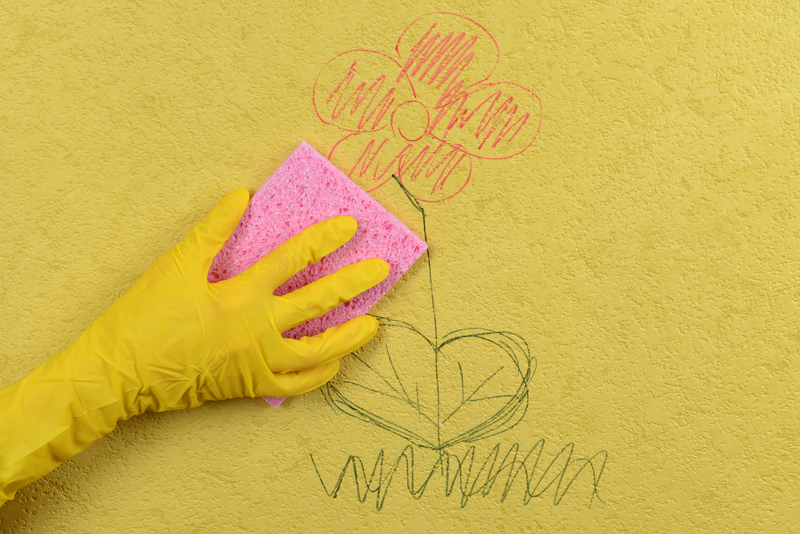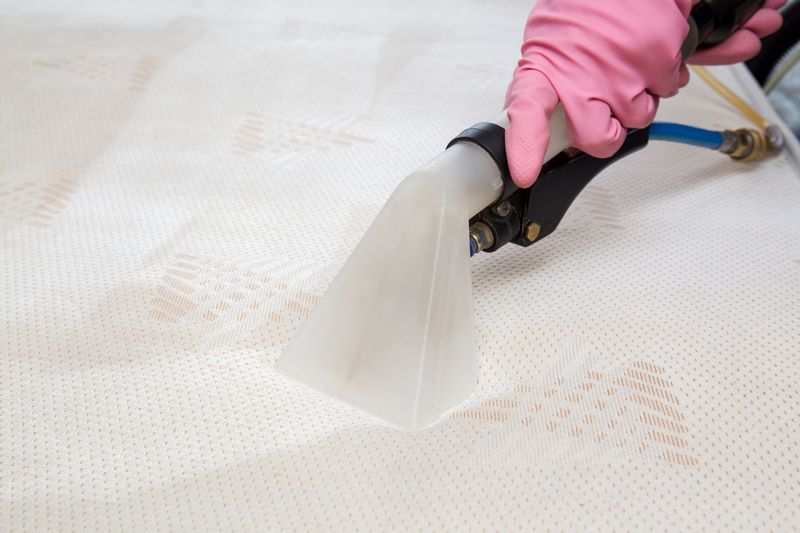Effective Strategies for Cleaning Mould off Window Sills
Posted on 14/09/2025
Effective Strategies for Cleaning Mould off Window Sills
Mould growth on window sills is not only unsightly but can also lead to potential health risks and damage the structure of your home. Whether dealing with a minor spot or extensive buildup, removing mould from window frames is crucial for maintaining a healthy environment. In this comprehensive guide, we'll delve into the most effective methods for cleaning mould off window sills, from natural solutions to preventative tactics, ensuring long-lasting results.
Why Is There Mould on My Window Sills?
Before exploring techniques to clean mould from window sills, it's important to understand why mould grows on window frames and sills. Mould thrives in areas with high moisture, limited ventilation, and organic material to feed on--conditions that are often present around windows, especially during colder months.
- Condensation from warm indoor air meeting cold glass.
- Poor ventilation, trapping moisture around windows.
- Leaky windows letting water seep into wooden frames.
- Organic debris (dust, pollen) accumulating on surfaces.
Addressing the root causes of mould will increase the effectiveness of any cleaning method and help prevent recurrence.

Health Risks Associated with Mould Exposure
Exposure to mould spores can cause a range of health problems, especially for individuals with allergies, asthma, or compromised immune systems. Common symptoms include:
- Coughing and sneezing
- Watery eyes and nasal congestion
- Headaches and fatigue
- Skin irritation
Preparation: Safety Precautions Before Cleaning Mould
When cleaning mould off window frames, safety comes first. Mould spores can become airborne during the cleaning process. Here's how to protect yourself:
- Wear rubber gloves to avoid skin contact.
- Don a mask or respirator to prevent inhaling spores.
- Use safety glasses or goggles to protect your eyes.
- Ensure the area is well-ventilated--open other windows or doors.
- Lay down old towels or plastic sheeting to catch drips and debris.
Step-by-Step Guide: How to Remove Mould from Window Sills
Here's a practical, step-by-step process for cleaning mould off window sills using both commercial and natural products.
Step 1: Dry Brushing and Vacuuming
- Use a dry, stiff brush to loosen mould spores on the surface of the sill.
- Immediately vacuum the area with a HEPA filter vacuum to remove loosened spores. Dispose of the vacuum contents in a sealed bag.
Step 2: Choose Your Cleaning Solution
There are several effective solutions for removing mould from windowsills. Select based on the material of your window frame (wood, plastic, aluminium) and the severity of growth.
- White Vinegar: Undiluted white vinegar is a natural, non-toxic mould killer. Spray directly on the area.
- Hydrogen Peroxide: Use a 3% hydrogen peroxide solution; it penetrates porous surfaces and lifts mould stubborn stains.
- Baking Soda: Dissolve in water to create a gentle abrasive paste, ideal for delicate surfaces.
- Commercial Mould Removers: Quick and powerful but may contain harsh chemicals. Always follow the manufacturer's instructions.
Step 3: Apply the Cleaning Solution
- Spray or apply your chosen solution generously over the affected area.
- Let it sit for at least 10-15 minutes to allow the solution to break down mould and mildew.
- For heavy or black mould, reapply the solution as needed.
Step 4: Scrub and Wipe
- Scrub the area with a soft brush or sponge, paying close attention to corners and crevices.
- Use an old toothbrush for small or intricate areas on your window frame.
- Wipe away the loosened mould and residual cleaner with a clean, damp cloth.
Step 5: Disinfection (Optional but Recommended)
- Spray a disinfectant (such as diluted bleach--1 part bleach to 10 parts water) and let it sit for 5 minutes.
- Thoroughly wipe the area, then rinse with a clean, damp rag.
- *Note: Do not mix vinegar with bleach or hydrogen peroxide with vinegar--these combinations can produce harmful fumes.*
Step 6: Dry Thoroughly
- Ensuring surfaces are completely dry is crucial. Use paper towels or a fan to speed up the drying process.
- Leaving surfaces damp can encourage new mould growth.
Additional Tips for Cleaning Mould Off Window Frames
- Always clean from the top of the window down to avoid spreading mould to previously cleaned areas.
- Replace harsh abrasive pads with soft sponges for delicate or painted surfaces.
- For wooden sills, limit water exposure to prevent warping or rot.
Natural Home Remedies vs. Commercial Mould Cleaners
Should you opt for natural cleaning methods or commercial mould removers? Both have pros and cons:
- Natural remedies (vinegar, baking soda) are eco-friendly, safe for kids and pets, and effective for mild to moderate growth.
- Commercial products are suitable for severe infestations or when time is critical but may be caustic and require caution during use.
- Test any product on a small, inconspicuous section of your window frame before full application, especially on wood.
Preventing Future Mould Growth on Window Sills
After removing mould from your window sill, focus on prevention to keep your home healthy and windows clean. Easy, proactive steps include:
- Reduce indoor humidity by using dehumidifiers, especially in damp rooms (bathrooms, kitchens).
- Improve ventilation - open windows regularly, use extractor fans in moisture-prone areas.
- Wipe condensation from window panes and sills daily during cold weather.
- Repair leaks and reseal window frames to block water ingress.
- Remove dust, dirt, and organic matter from sills at least monthly to deprive mould of nutrients.
- Consider installing double glazing to minimize condensation and thermal transfer.
When to Replace a Mouldy Window Sill
If the window sill is damaged, soft, or the mould has penetrated deeply into the wood, replacement may be your best option. Signs include:
- Cracking or flaking paint that doesn't hold after cleaning.
- Permanent stains or odours indicating ingrained mould.
- Wood feels spongy or crumbles under pressure.

FAQ: Cleaning Mould off Window Sills
- Can vinegar kill mould on window sills?
Yes, white vinegar destroys up to 82% of mould species and is safe for most surfaces. - Is it safe to use bleach on window frames?
Bleach can be effective but may cause damage to wood and discolouration on painted surfaces. Always dilute before use. - How often should I check for mould on my window sills?
Inspect sills monthly, especially during colder or wetter seasons. - What's the best way to get rid of black mould on window sills?
Apply hydrogen peroxide or a strong commercial fungicide, allow to sit, then scrub thoroughly. Address underlying moisture problems.
Conclusion: Maintaining Clean, Mould-Free Window Sills
Keeping your window sills free from mould requires vigilance, regular maintenance, and prompt action at the first sign of growth. Whether you choose powerful commercial cleaners or safe, natural remedies, the key to success is thoroughness and prevention. Effective mould cleaning techniques not only restore the look of your windows but also safeguard your indoor air quality and the durability of your home.
By adopting these effective strategies for cleaning mould off window sills, you're investing in a healthier, more beautiful home environment.





